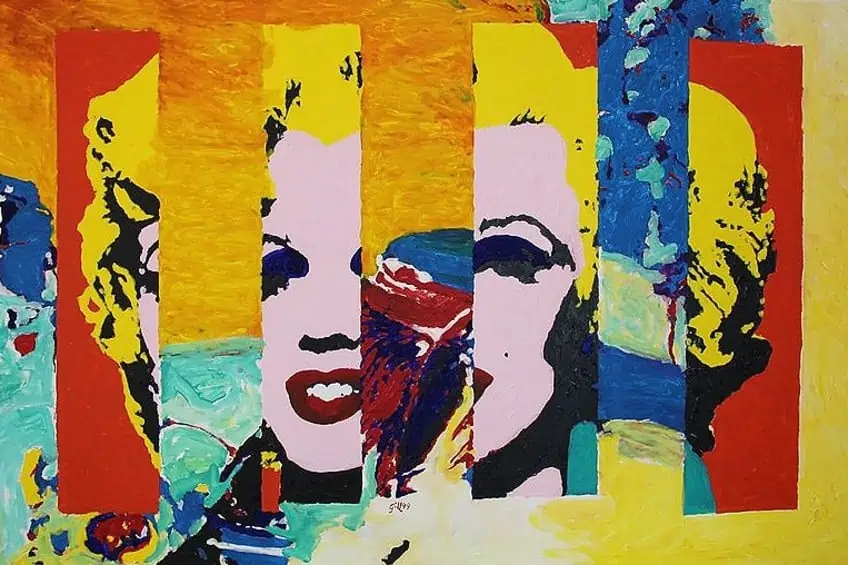Pop Art – Discover the History of the Iconic Pop Art Movement
The Pop art movement emerged in the 1950s and the 1960s in the United States of America as well as the United Kingdom. These artists shifted the art world in many interesting ways, reacting to older art movements and changing the way people interacted with the world directly around them. These artists challenged traditions. Today we will be looking at ways in which the Pop art movement changed the art world and introduced new Pop art ideas into the world. But first, we will ask, what is Pop art?
Contents
- 1 A Pop Art Definition
- 2 Pop Art Background
- 3 Famous Pop Art Artists
- 3.1 Corita Kent (1918 – 1986)
- 3.2 Richard Hamilton (1922 – 2011)
- 3.3 Roy Lichtenstein (1923 – 1997)
- 3.4 Sturtevant (1924 – 2014)
- 3.5 Robert Rauschenberg (1925 – 2008)
- 3.6 Andy Warhol (1928 – 1987)
- 3.7 Claes Oldenburg (1929 – Present)
- 3.8 Jasper Johns (1930 – Present)
- 3.9 Marisol (1930 – 2016)
- 3.10 Majorie Strider (1931 – 2014)
- 3.11 Pauline Boty (1938 – 1966)
- 4 Pop Art’s Legacy
- 5 Frequently Asked Questions
A Pop Art Definition
The Pop art movement is a movement in art wherein artists used imagery from everyday life and popular or mass culture. Images from magazines, comic books, and popular culture were taken from their ordinariness and elevated into a form of art. In this way, Pop art artists challenged the ideas of what was allowed to be art and challenged the elitist norms of the art world.
It challenged the art world by using the images typically associated with what was popular and trendy, rejecting forms associated with the more elite and “cultured” art world.
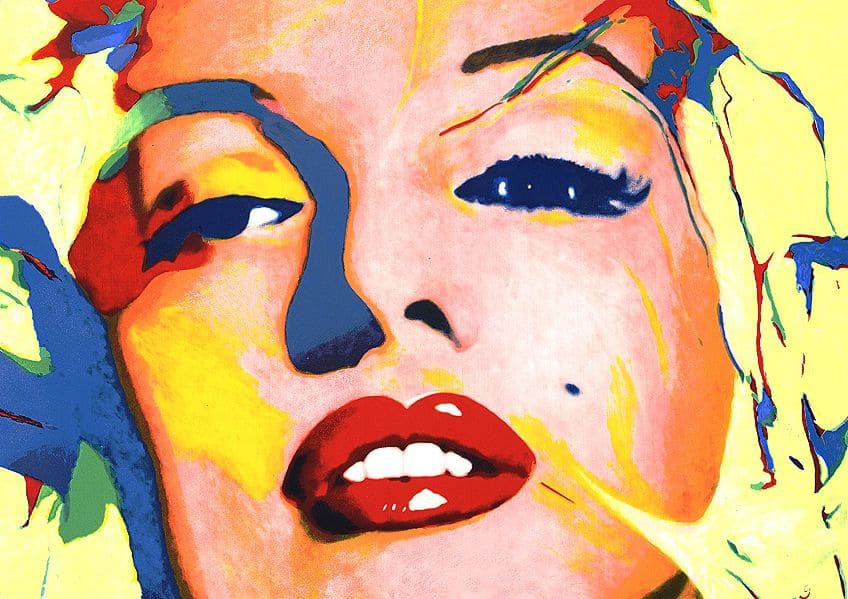
The artists who explored Pop art emphasized the banal and kitschy artifacts of culture and used irony to point out both the nightmares of mass-produced objects as well as the way that art separates itself from the rest of culture.
Cartoons, advertisements, and comic books saturated the world of images in this time and the artists used what was available with a hint of irony to make their statements.
Some famous Pop art artists include Andy Warhol, Jasper Johns, Robert Rauschenberg, and Richard Hamilton from the United States. The most famous group from the United Kingdom includes The Independent Group, seen as a precursor to the Pop Art movement.
What Medium Did Pop Artists Use?
Pop artists used mechanical means of production to create their art. This included mediums such as silkscreen or collage. Silkscreen is a medium that was invented to mass-produce images, usually on fabric such as with T-shirt prints and other everyday objects. The silkscreen gave artists a chance to distance themselves from the process of creation. They did not want to have too much of a hand in the artmaking process and preferred their works to be created mechanically.
Collage was another preferred medium because of its use of ready-made images from popular culture.
Collages and mixed media were useful when using images cut from magazines, comic books, and advertisements. In modern Pop art, this gave artists another chance to distance themselves from the artworks. Collage and silk screen both take away aspects of the “artist’s hand”. Unlike drawing and painting wherein the artist makes a specific mark according to their own bodies and styles, these mediums are slightly removed from this process.
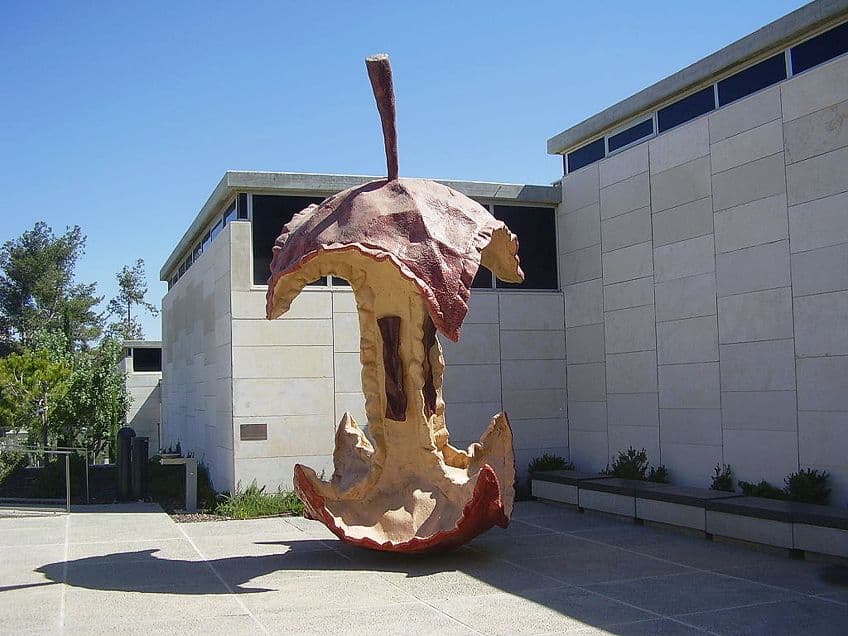
This means that artists can be more mechanical and less personal, moving away from the expressiveness as seen in art movements like Abstract Expressionism. Another medium typically used by Pop art artists is that of Ben-Day dots. Invented by Benjamin Henry Day Jr., the Ben-Day dots are a printing technique using small dots of the colors cyan, magenta, yellow and black.
These were used in comic book printing to create shading and color in comics. These small dots offered artists another way to mechanize their art-making processes.
Pop Art Characteristics
Pop art is marked by a specific way that artists saw the growing world of images. Although not all artists’ works are marked by these exact characteristics, many of the artists in the Pop art movement created work that was marked by several of the following characteristics:
- Popular images: Pop artists used recognizable imagery and icons such as everyday objects, celebrities, and images from advertisements. This was in response to a growing culture of trendy imagery that saturated the media and altered the way people lived their lives.
- Innovative techniques: Pop artists used exciting and innovative techniques such as printmaking and other media. Andy Warhol is known to have popularized the use of the printing technique called the silkscreen, which could mechanically reproduce images with varying levels of detail.
- Bright colors: Pop art is marked by bright colors, specifically using primary colors. Inspired by popular media, this meant that artists also used bright and trendy colors as seen in advertisements and magazines.
- Irony and humor: Pop artists used satire, irony, and a tongue-in-cheek approach to their work, twisting popular images to create commentary about those themes. Many artists used images directly out of magazines, changing only their contexts, and this created statements that were both powerful and humoristic.
- Mixed media: Pop art is characterized by combining different images, using techniques such as collage. This meant that the artists could use popular images directly from the source and alter the way that these images were perceived. Artists like Richard Hamilton famously used collage in ways that shocked the art world and altered the perception of ideas like the American Dream.
Pop Art Background
The Pop art background can be traced to the Independent Group, mentioned previously. This group of artists from the United Kingdom created art more academically. While American artists responded to the popular imagery used in their everyday lives, the UK artists looked at the way that American marketing and imagery were changing the world through a more academic lens.
They could respond to what they were seeing without it being too close to them.
The artist Richard Hamilton created what is considered one of the first Pop art artworks, entitled Just what is it that makes today’s homes so different, so appealing? (1956). This artwork is a collage of images cut from magazines such as the Ladies Home Journal and Tomorrow’s Man magazine.
This imagery is combined to create a spectacular scene of the interior of a house with various objects strewn about. It mocks the idealistic American Dream set up by propagandists and advertisement companies that attempted to create an image of America as the land of opportunity.
In this ideal vision, anyone could work until they reached this dream of owning the right vacuum and living in domestic, suburban bliss.
Even the people in this artwork seem to be commodities – the strong American man and the voluptuous woman off her feet on the couch. This artwork became a sort-of manifesto for the Pop art movement and symbolized a shift in the art world.
American Pop Art versus British Pop Art
British Pop art and American Pop art are considered the same movement but were very distinct from each other. Earlier Pop art in Britain was based on the Pop art idea that the American popular culture was seeping into the UK and manipulating people, while American Pop art was about the culture the artists were actively living in.
In America, Pop was a response to the loose painterly styles of Abstract Expressionism. They were moving on from the emotional imagery used in the previous era.

American artists rather focused on universal, mundane imagery and used sharp lines and edges and distinct forms. In the United Kingdom, the movement was much more academic and marked by irony and parody.
The British artists were focused on the way that American media could manipulate the general populace and the power that drove it.
The Missing Pop Art Women
There is not a lot of mention of female Pop artists in most articles about it, but in the following list, we have included some of the women who had an influence on Pop Art and Pop art painting. Pop art’s focus was on mechanical, unemotional, and distanced ways of creating art. These methods can be seen as stereotypically male.
Most of the more famous Pop art artists were men, and it is seen as another one of art history’s boys’ clubs. These artists perpetuated the fantasy of the artist being a lone genius with no attachments more important than their art-making.

Women who wanted to take part in the Pop art movement often had to work much harder to show they were serious, or otherwise found ways to enter this movement by critiquing it from inside – a move which did not pay off until recently when more female Pop artists have been receiving the recognition they deserve.
Artists like Pauline Boty, Sturtevant, and Marjorie Strider are among a few names that will be discussed alongside their male contemporaries.
Famous Pop Art Artists
There were many important Pop artists at this time. We will be discussing some of these artists and the techniques they are famous for using, discussing aspects of their lives or their theories about art in the following section.
Corita Kent (1918 – 1986)
| Artist | Corita Kent |
| When the Artist Lived | 1918 – 1986 |
| Nationality of the Artist | American |
| Where the Artist Lived | Los Angeles, USA |
| Associated Art Mediums | Serigraphy |
Also known as Sister Mary Corita Kent, Corita Kent was a nun and art teacher at a convent in Los Angeles. She departed from Immaculate Heart College where she taught in 1968 because of the politics of the church as well as her own artistic goals and fame. She made many radio and television appearances around America in those years.
She worked mostly with serigraphy, or screen printing, even before Andy Warhol made the medium famous, due to the way that it was affordable and could be mass-produced.
Her colorful artworks were mostly text-based, combining Bible verses, logos, quotes, and song lyrics, among others. Her work investigated heavy themes like civil rights and poverty, focusing especially on the Vietnam War. She hoped her art would affect change in the world she saw around her.
Her painting look (1965) shows the logo of the Look magazine, and then appropriates the Beatles lyrics “Love is here to stay, and that’s enough”. These words are printed in colorful blocks. This artwork mimics a magazine cover while using popular song lyrics to send her message. These words were typical to see in the 1960s during the protests against the Vietnam War. They also refer to the handmade quality of the signs held at protests.
Kent is still known as “the joyous revolutionary”, a name given to her by Ben Shahn because of the activist ideals she retained until she died in 1986.
Richard Hamilton (1922 – 2011)
| Artist | Richard Hamilton |
| When the Artist Lived | 1922 – 2011 |
| Nationality of the Artist | English |
| Where the Artist Lived | London |
| Associated Art Mediums | Collage and Painting |
As mentioned earlier, Richard Hamilton was one of the founders of the Independent Group in London who created more academic work about consumerism and the themes found in the Pop art movement. In a letter to Alison and Peter Smithson, Hamilton wrote down the words defining Pop art that laid the ground for most artists and the whole international movement.
These words were, “Pop Art is: popular, transient, expendable, low-cost, mass-produced, young, witty, sexy, gimmicky, glamorous, and Big Business”.
These words emphasize the everyday aspects of Pop art and its “lowbrow” identification. He then created collages using advertisements, magazines, and newspapers. One of his other famous Pop artworks is My Marilyn (1964). This was a silkscreen made with photographs of the actress Marilyn Monroe published shortly after her death by the photographer George Barris.
Hamilton appropriated these photos, which were not what the actress approved but rather, they were photos that she had made crosses over.
She didn’t approve of these photos and needed them to be retouched or altered, or otherwise discarded. The actress erased pieces of herself in these photographs and publishing them after her death made the artwork even more touching.
Roy Lichtenstein (1923 – 1997)
| Artist | Roy Lichtenstein |
| When the Artist Lived | 1923 – 1997 |
| Nationality of the Artist | American |
| Where the Artist Lived | New York City, USA |
| Associated Art Mediums | Painting |
Making some of the most iconic images of the Pop art movement, Roy Lichtenstein was an American artist known for his satirical copies of popular imagery from comic books. Lichtenstein described Pop art painting as “industrial painting”, and used a tongue-in-cheek manner to layer irony into his artworks.
His mediums included paintings and the use of Ben-Day dots. But instead of printing these dots, the artist meticulously painted them by hand.
He would use images from comic strips and draw directly onto them, then he would project these images onto canvas and repaint them. He adjusted the images as he worked, making satirical comments in the image. In this way, he could emphasize all the clichés that he could find in the images and also comment on the way that imagery is used in commercialized print media.

One of his most important Pop artworks is the M-Maybe painting of 1965. This depicts an attractive blonde woman with a gloved hand on her face. She is distressed. The words above her head say, “M-maybe he became ill and couldn’t leave the studio!”, mocking the cliché of the helpless woman who is waiting for a man that will not show up.
The painting is done in a clean and emotionless manner, despite the emotional content of the artwork. The woman’s private words contrast heavily with the way that she is painted in flat colors. The painter is said to have aspired to create work that was as mechanical as possible.
Sturtevant (1924 – 2014)
| Artist | Sturtevant |
| When the Artist Lived | 1924 – 2014 |
| Nationality of the Artist | American |
| Where the Artist Lived | New York City |
| Associated Art Mediums | Painting, Appropriation |
Elaine Sturtevant used only her last name when she became a Pop artist. Her entire body of work was in making carbon copies of famous artworks by male artists, from Michel Duchamp to Keith Haring. This is considered to be appropriation art – when artists used other artists’ works and adjusted them to create their own work, usually making a statement about this work. Appropriation is also when artists use images created by others, such as cartoons or famous photographs.
Andy Warhol encouraged Sturtevant’s practice when he gave her one of his silkscreen artworks to work from, but other artists were very unappreciative of her work.
Sturtevant would paint these copies, rather than mass-producing them. She investigated the act of creating art and used her work to study the myths of the artist-as-genius (usually the male artist), as well as the ideas of originality and authorship. This made her one of the female artists who critiques the Pop art movement from inside it, while also making her work inseparable from her contemporaries.
Her artwork Warhol Diptych (1973) depicts Andy Warhol’s famous diptych of Marilyn Monroe portraits, but these were meticulously painted by Sturtevant, making just slightly altered images of the artwork. Sturtevant often stated that she worked with “vertigo”, as the images often had a difference that one couldn’t quite place a finger on until one knew that they were not the original artworks.
Sturtevant received a Golden Lion for Lifetime Achievement at the Venice Biennale in 2011 for her contribution to the art world and her experiments with originality and authorship.
Robert Rauschenberg (1925 – 2008)
| Artist | Robert Rauschenberg |
| When the Artist Lived | 1925 – 2008 |
| Nationality of the Artist | American |
| Where the Artist Lived | New York City, USA |
| Associated Art Mediums | Painting, Sculpture, Collage, Performance, and Printmaking |
Robert Rauschenberg was another of the most important Pop artists. His early work is said to have anticipated the Pop art movement. These early works are referred to as “Combines”, and incorporate objects from everyday life and blur the line between painting and sculpture.
One such work, entitled Monogram (1955 – 1959), was a combination of objects such as a stuffed goat and a tire combined with artistic media such as paint and collage. The goat, according to the artist, symbolizes lust. This artwork became a symbol of homosexuality in the Pop art era and is one of Rauschenberg’s most famous works.
In 1953, the artist caused a scandal when he took a Willem de Kooning drawing and erased everything from the page.
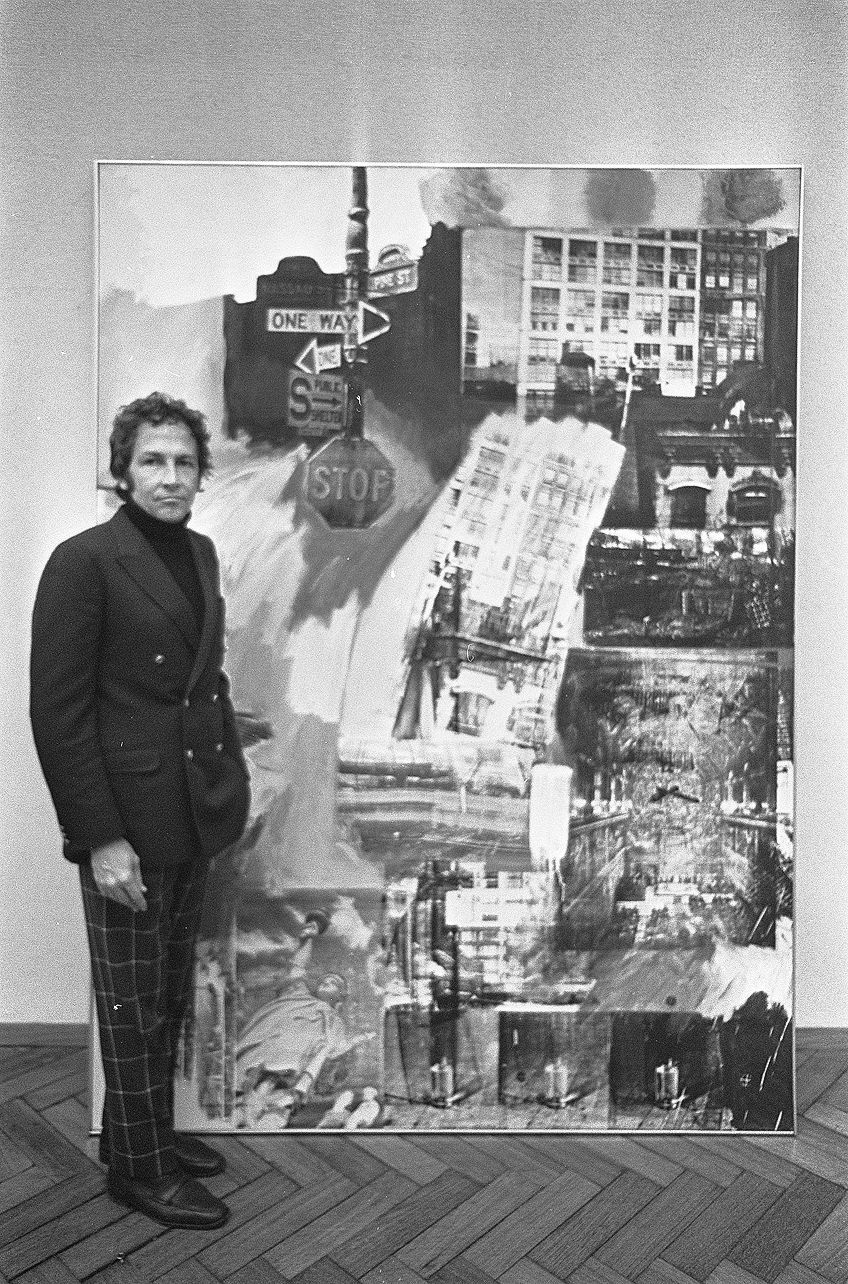
Rauschenberg had set out to see if he could create an artwork with erasure as the medium. The erasure comments on authorship and the value placed on certain things, including the work of certain artists, and contains that same tongue-in-cheek approach that Pop artists have in common. Rauschenberg also made the series titled The White Paintings (1953), wherein the artist also experimented with authorship and creativity. These paintings were entirely white, with almost no content.
In the same way, as will be seen in the work of Andy Warhol, the artist attempted to remove himself from the creation of the painting and create distance from the production process.
He is famously stated as saying that “Today” was the creator of the work, removing himself from the seat of the author. Later on, the work had to be repainted and the artist asked friends and assistants to do so, entirely removing himself from the author’s role.
Andy Warhol (1928 – 1987)
| Artist | Andy Warhol |
| When the Artist Lived | 1928 – 1987 |
| Nationality of the Artist | American |
| Where the Artist Lived | New York City, USA |
| Associated Art Mediums | Silkscreen, Cinema, and Photography |
Andy Warhol was one of the most famous artists of the twentieth century. He was an American Pop artist who explored popular culture, the saturation of advertising and consumerism in America, and the ideas around artistic expression. Warhol was obsessed with mechanization and removing the expressive and emotional content from the artistic process.
In 1963, Warhol said, “I want to be a machine” and this was reflected in his art-making processes. He used mediums that he felt he could remove his own artistic hand from and tried to create a vast distance between him and his work.
His New York Studio was called The Factory, reflecting his ideas around mechanization. The Factory also became a social hub, famous for its extravagant events that brought together patrons, intellectuals, models and celebrities, drag queens, and people in the art world. Warhol also was openly gay before the gay liberation movement in America. In 1968, Valerie Solanas, a radical feminist, shot Warhol in his studio, almost killing him.
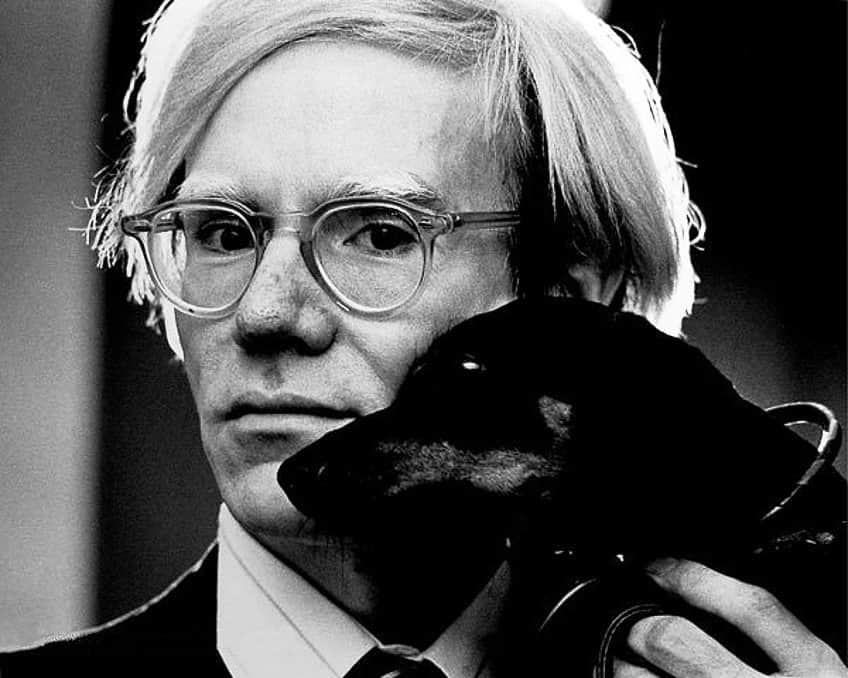
Warhol is known for his bright and colorful artworks of celebrities, including Marilyn Monroe, Elvis Presley, and Muhammed Ali. He also used everyday objects like soup cans and Brillo pads. For Warhol, it was important to use objects that were part of everyday life
His 1962 artwork, Marilyn Diptych, is one of his most famous Pop artworks. After the actress’s death, he used an image from an advertisement for the movie Niagara and created this artwork using silkscreen.
The diptych consists of two canvases, each containing 25 Marilyns printed in a grid. One of the panels is bursting with bright colors, while the other one is in black and white. These two panels contrast in a way that is symbolic of Monroe’s bright public persona that contrasts with her dark and troubled personal life.
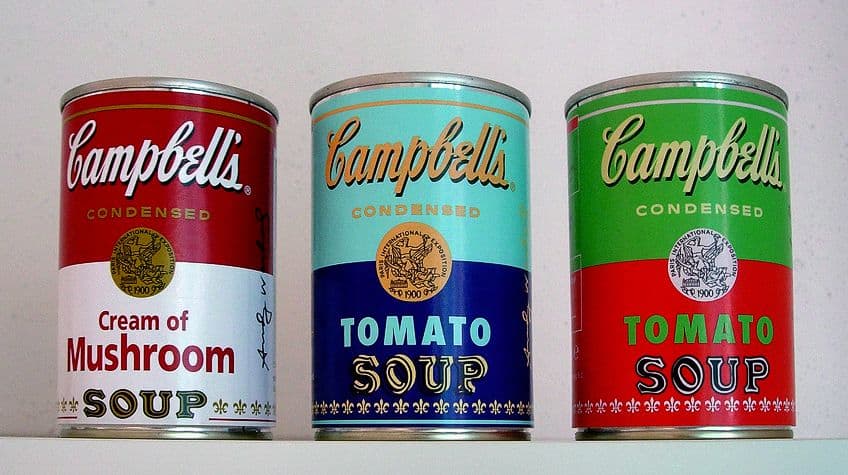
Other artworks that Warhol is known for include Campbell’s Soup Cans (1962). In 1961, Warhol started using these images in artworks, inspired by gallery owner Murial Latow who said that the artist must find an image that anyone would recognize immediately, like a can of Campbell’s soup. Once again, he used the grid formation and made many different artworks using the soup cans during his lifetime. These artworks made powerful statements about mass production, repetition in advertising, as well as consumerism.
Warhol himself was also a subject of his own art and he understood the workings of celebrity culture to create an artistic persona for himself that was famously cold and cool. Warhol used these Pop art ideas in his work, noting the way that the media created personalities for stars and celebrities that were not anything like their real-life personalities, and he used this idea to make many self-portraits too. Warhol died in 1987 during gallbladder surgery.
His work is some of the most expensive artworks ever sold at auction and he is still one of the most world-renowned artists of his time.
Claes Oldenburg (1929 – Present)
| Artist | Claes Oldenburg |
| When the Artist Lived | 1929 – Present |
| Nationality of the Artist | Swedish |
| Where the Artist Lived | New York City, USA |
| Associated Art Mediums | Sculpture |
Claes Oldenburg was another American Pop Artist but he was known for his Pop sculptures. These artworks were fun tongue-in-cheek sculptures of everyday objects. He refused to make work that would easily fit into a gallery or museum, rejecting the institutionalized art world.
Oldenburg wanted his art to do something other than sit in a museum.
He created larger-than-life clothespins, carrots, a spoon and cherry, and other life-sized objects. These artworks were fun interpretations of the objects, sometimes warping their shapes slightly for a more humorous effect. One such artwork, Clothespin (1976) was a 45-foot-tall clothespin that stood upright over a subway entrance in Philadelphia. The clothespin’s hinge is shaped in a seven and a six, representing the year the artwork was created, as well as the city’s bicentennial.

Oldenburg’s older work included soft sculptures. The Soft Toilet was an artwork created in 1966. In this artwork, he transformed the toilet – a mass-produced object and symbol of modern hygiene – into a soft sculpture. He used vinyl and sewed it by hand, filling it with stuffing. This toilet is embedded with drama and humor, and its functionality is definitely ruined.
Oldenburg created a sense of fun in the gallery and refused to let the restrictions defined by others impact his goals for making art.
Jasper Johns (1930 – Present)
| Artist | Jasper Johns |
| When the Artist Lived | 1930 – Present |
| Nationality of the Artist | American |
| Where the Artist Lived | New York City, USA |
| Associated Art Mediums | Painting, Sculpture, and Printmaking |
Jasper Johns created Pop art paintings. He is well known for his American flag paintings, and it is well documented that he regularly burned his earlier works because he felt something was missing from them. His work Flag (1954) is an encaustic painting of the American flag. This medium included using wax and comes from before the Renaissance. Johns used other symbols similar to the flag, including maps of America, numbers, letters, and targets.
What is so intriguing about this painting is its paradoxical complexity and simplicity.
The work doesn’t tell the story of anything other than what is depicted in it – the flag. The artwork refers only to itself, not like other art movements where the paintings often alluded to philosophical concepts. Flag refers to other flags, but the artist does not ascribe a meaning to the work. Some critics said that the artist is decidedly unpatriotic, while the artist never made many specifically political allusions.
The artist used this ready-made image as his subject. The American flag is a symbol that can have many different connotations and because of the artist’s silence around the topic, there was an air of mystery to the artworks that made them alluring to collectors and curators at the time.
These flag paintings became some of the most important artworks of the Pop art movement.
Marisol (1930 – 2016)
| Artist | Marisol |
| When the Artist Lived | 1930 – 2016 |
| Nationality of the Artist | Venezuelan-American |
| Where the Artist Lived | New York City, USA |
| Associated Art Mediums | Sculpture, Collage, and Painting |
Marisol Escobar was an American-Venezuelan artist and one of the only women in the New York Pop art scene, but later her work changed, and she is seen as coming from a Pop art background. Her work had a different sense from the other artists because of her use of found objects, often wood.
She involved herself much more in the making of these artworks than artists like Andy Warhol, who wanted to create distance from his artworks.
She was friends with Warhol, and even acted in some of his films. In 1968, she showed her work at the Venice Biennale and Documenta, showing how famous she had become in those early years. Her work contains the influences of pre-Columbian folk art, influenced largely by the suicide of her mother. She worked with assemblage as her main medium, creating three-dimensional collages and sculptures out of found objects.
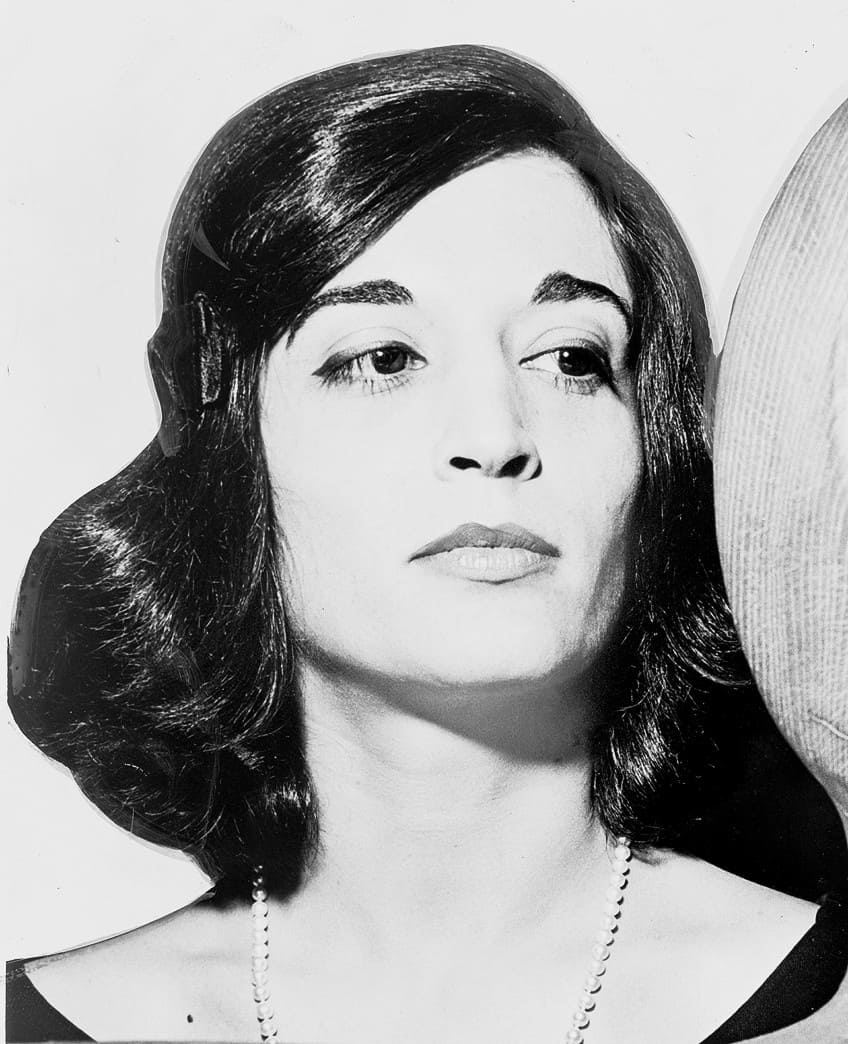
These are mostly wooden sculptures. Her use of the wood’s natural textures was a step away from Pop art’s typical characteristics, and the artist was hesitant to associate too closely with the Pop art movement. Still, her work depicts celebrities and everyday scenes of her family and marginalized groups.
Her artwork, The Party (1966), is one of Marisol’s most famous artworks. It contains fifteen figures and three wall panels, using objects such as mirrors, clothing, glasses, and televisions. All the figures are shown to be elite in some way, dressed finely with expensive drinks.
Each of these figures is different, but all contain Marisol’s own facial features. The artwork is mainly about alienation and all these figures are searching for connection but do not find it among these others who are dressed so finely. None of them interact. Marisol holds up a mirror to society in this way, to comment on the growing social isolation that was taking place in the 1960s.
Majorie Strider (1931 – 2014)
| Artist | Marjorie Strider |
| When the Artist Lived | 1931 – 2014 |
| Nationality of the Artist | American |
| Where the Artist Lived | New York City |
| Associated Art Mediums | Painting, Sculpture, and Performance Art |
Marjorie Strider was a Feminist artist who took part in modern Pop art. She was an artist from America who made sculptural paintings that satirized men’s magazines. She used imagery that seemed almost pornographic to mock the way that women were depicted in the media, using sculptural objects in her paintings to illustrate her point. These large paintings were confrontational and humorous.
The most iconic work of hers is Girl with Radish (1963).
This painting shows a generic female face that could have easily been used in any form of media at the time. Strider used the image of a woman that is typical in the sexualized depiction of a beautiful woman, with her mouth slightly open, and instead placed a radish between the woman’s teeth. The radish is built onto the canvas, in Strider’s signature style.
The humor in this artwork challenged viewers to consider the way that women were shown in advertisements and men’s magazines and made unavoidable statements about these issues.
Pauline Boty (1938 – 1966)
| Artist | Pauline Boty |
| When the Artist Lived | 1938 – 1966 |
| Nationality of the Artist | British |
| Where the Artist Lived | London |
| Associated Art Mediums | Stained Glass, Collage, and Painting |
Pauline Boty was one of the only female founders of the British Pop movement. She was born in London and trained at the Wimbledon School of Art and the Royal College of Art, focusing on stained glass. She also worked in painting and collage. Boty was also a talented actress.
When she died in 1966, she was only 28 years old and her work faded into obscurity but was recently picked up again and shown in many exhibitions.
Boty rejected the detachment and distance that many of the other Pop artists held towards their work, and her work was very involved and expressionistic. She made many Pop art paintings referring to events like the Cuban missile crisis, using expressive colors and detailed figures to create scenes that showed the female perspective on these events.
She also made many paintings referring to female sexuality, showing women as desiring beings who could also objectify men. Her painting It’s a Man’s World I (1964) contrasts male figures like Einstein and Mohammed Ali with a red rose, which she used as a symbol of female desire and sexuality throughout her career. The painting uses the square shapes filled with these male figures from popular culture, all painted expressively, to contrast visually with the red rose.
Her paintings were intimate expressions of feminist ideas while still using the imagery associated with Pop artworks.
Pop Art’s Legacy
Pop Art stirred the art world and created ripple effects in the worlds of art, design, and advertising. It was a break away from Modernism, and a movement into Postmodernism. Pop artists made artworks about the world that artists lived in, and did not merely present it, or make art for art’s sake. These artists had commentary and messages to relay to the outside world.
Pop art ideas stirred the visual world, questioning who made art and who made design, and why each had its separate value.
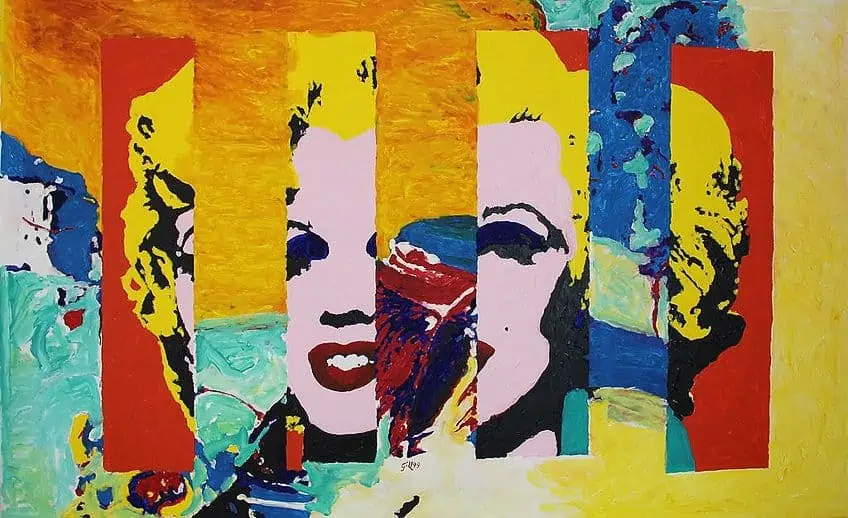
The artists’ questions about the media and what it was doing to consumers, and how the everyday world of images was important too. The Pop art movement left a large legacy of shaping the future and the way artists would think about the world around them and how that was depicted in their work. Starting in the Pop art era, contemporary art became art about the world we were living in and the ways that artists could address real-time issues.
Pop art also returned a sense of fun and irony to the art world (last seen during Surrealism and Dada), twisting its own histories into joking commentary and soft sculptures.
These artists had a big influence on artists to come, and many artists have a sense of the Pop art aesthetic to it. Artists like Jeff Koons, Keith Haring, and Takashi Murakami, to name a few, are all famous contemporary artists who were influenced by Pop art and can be seen as making modern Pop art.
The Pop art era has shaped the world in a different way than movements in Modernism. Its legacy is ongoing and the importance thereof is seen in the way that we make and look at art, as well as in the ways we engage with advertising and media to create a better world for ourselves.
Frequently Asked Questions
Is Pop Art Contemporary Art?
Pop art is a step away from Modern art and can be seen as the beginning of contemporary art. The way these artists rejected the ideas of post-Impressionism and other art movements and strived to create artworks about modern-day topics classifies Pop art as the first movement of Contemporary art.
What Is the Pop Art Definition?
What is Pop art? Pop art is art based on popular culture and media used in the 1960s, particularly mass media and its effects on society, wherein artists used humor to comment on these topics.
When Did the Pop Art Movement Start?
It is said that the Pop art movement started in the 1950s but came to prominence in the 1960s.
Jordan Anthony is a Cape Town-based film photographer, curator, and arts writer. She holds a Bachelor of Art in Fine Arts from the University of the Witwatersrand, Johannesburg, where she explored themes like healing, identity, dreams, and intuitive creation in her Contemporary art practice. Jordan has collaborated with various local art institutions, including the KZNSA Gallery in Durban, the Turbine Art Fair, and the Wits Art Museum. Her photography focuses on abstract color manipulations, portraiture, candid shots, and urban landscapes. She’s intrigued by philosophy, memory, and esotericism, drawing inspiration from Surrealism, Fluxus, and ancient civilizations, as well as childhood influences and found objects. Jordan is working for artfilemagazine since 2022 and writes blog posts about art history and photography.
Learn more about Jordan Anthony and about us.
Cite this Article
Jordan, Anthony, “Pop Art – Discover the History of the Iconic Pop Art Movement.” artfilemagazine – Your Online Art Source. July 10, 2022. URL: https://artfilemagazine.com/pop-art/
Anthony, J. (2022, 10 July). Pop Art – Discover the History of the Iconic Pop Art Movement. artfilemagazine – Your Online Art Source. https://artfilemagazine.com/pop-art/
Anthony, Jordan. “Pop Art – Discover the History of the Iconic Pop Art Movement.” artfilemagazine – Your Online Art Source, July 10, 2022. https://artfilemagazine.com/pop-art/.


